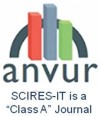Virtual Modeling for Architecture: teaching today digital representation techniques to tomorrow’s professional designers 
Abstract
Three-dimensional digital modeling is mostly a skill that needs to be consolidated in students’ careers, to allow them an adequate preparation to the post-graduation professional world. Just like the traditional disciplines of drawing and representation, computer graphics techniques evolved over the years, introducing several fascinating possibilities in architectural visualization. What this paper is mainly concerned with is the analysis of issues and advantages as results of teaching a few of those methodologies establishing an original teachers/students collaborative learning environment. Some experiences gained during the “Virtual Modeling for Architecture” lectures, mainly held in the School of Engineering and Architecture in Bologna, will be introduced featuring many students, who were involved in digital representation of buildings related to an important Cultural Heritage landmark in the Italian city of Bologna: its porticoes.
Keywords
Full Text:
PDFDOI: http://dx.doi.org/10.2423/i22394303v5n1p59
References
De Luca, L., Bussayarat, C., Stefani, C., Véron, P. & Florenzano, M., (2011). A semantic-based platform for the digital analysis of architectural heritage. In Journal of Computer Graphics. 35(2011), 227-241.
Docci M., Gaiani M., & Maestri D., (2011). Scienza del disegno (seconda edizione pp. 411-448). Roma, CittàStudi Edizioni.
Eastman, C., Teicholz, P., Sacks, R., & Liston, K., (2008). BIM Handbook: A Guide to Building Information Modeling for Owners, Managers, Designers, Engineers and Contractors. Hoboken, NJ: John Wiley and Sons.
Edwards, B., (2008). Understanding architecture through drawing. Abingdon, Oxon, England and New York, NY: Taylor & Francis.
Gaiani, M., Benedetti, B., & Apollonio, F. I., (2009). Standard di acquisizione e strutturazione di modelli digitali per sistemi informativi di aree archeologiche: il caso di Pompei. In Disegnare Idee Immagini, 39(2009). Roma: Gangemi Editore.
Gaiani, M., Benedetti, B., & Apollonio, F. I., (2011). Teorie per rappresentare e comunicare i siti archeologici attraverso modelli critici. In SCIRES-IT Scientific RESearch and Information Technology Ricerca Scientifica e Tecnologie dell'Informazione. 1(2), 37-70.
Kosko, B., & Isaka, S., (1993). Fuzzy Logic. In Scientific American, 269(1 1993), 62–67.
Lawson, B. R., (1980). How Designers Think. London: Oxford Architectural Press.
Stiny, G., & Gips, J., (1972). Shape Grammars and the Generative Specification of Painting and Sculpture. In Information Processing, 71(1972), 1460-1465.
Stoll Dalton, S., & Tharp, R., (2002). Standards for Pedagogy: Research, Theory and Practice. In Wells, G., & Claxton, G. Eds. Learning for life in the 21st century: sociocultural perspectives on the future of education. Oxford: Blackwell.
Sutherland, I. E., (1964). Sketch pad a man-machine graphical communication system. In Proceedings of the SHARE design automation workshop (DAC '64). New York, NY: USA, ACM.
Taxén, G., (2003). Teaching computer graphics constructively. In ACM SIGGRAPH 2003 Educators Program (pp. 1-4). New York, NY: USA, ACM.
Twomey Fosnot, C., (1996). Constructivism. Theory, Perspectives, and Practice. New York, NY: Teachers College Press.
Von Glasersfeld, E., (1995). Radical Constructivism. A Way of Knowing and Learning. New York, NY: RoutledgeFalmer.
Article Metrics
Metrics powered by PLOS ALM
Refbacks
- There are currently no refbacks.
Copyright (c) 2015 Simone Garagnani, Gianluca Cattoli

This work is licensed under a Creative Commons Attribution-NonCommercial-NoDerivatives 4.0 International License.
SCIRES-IT, e-ISSN 2239-4303
Journal founded by Virginia Valzano





